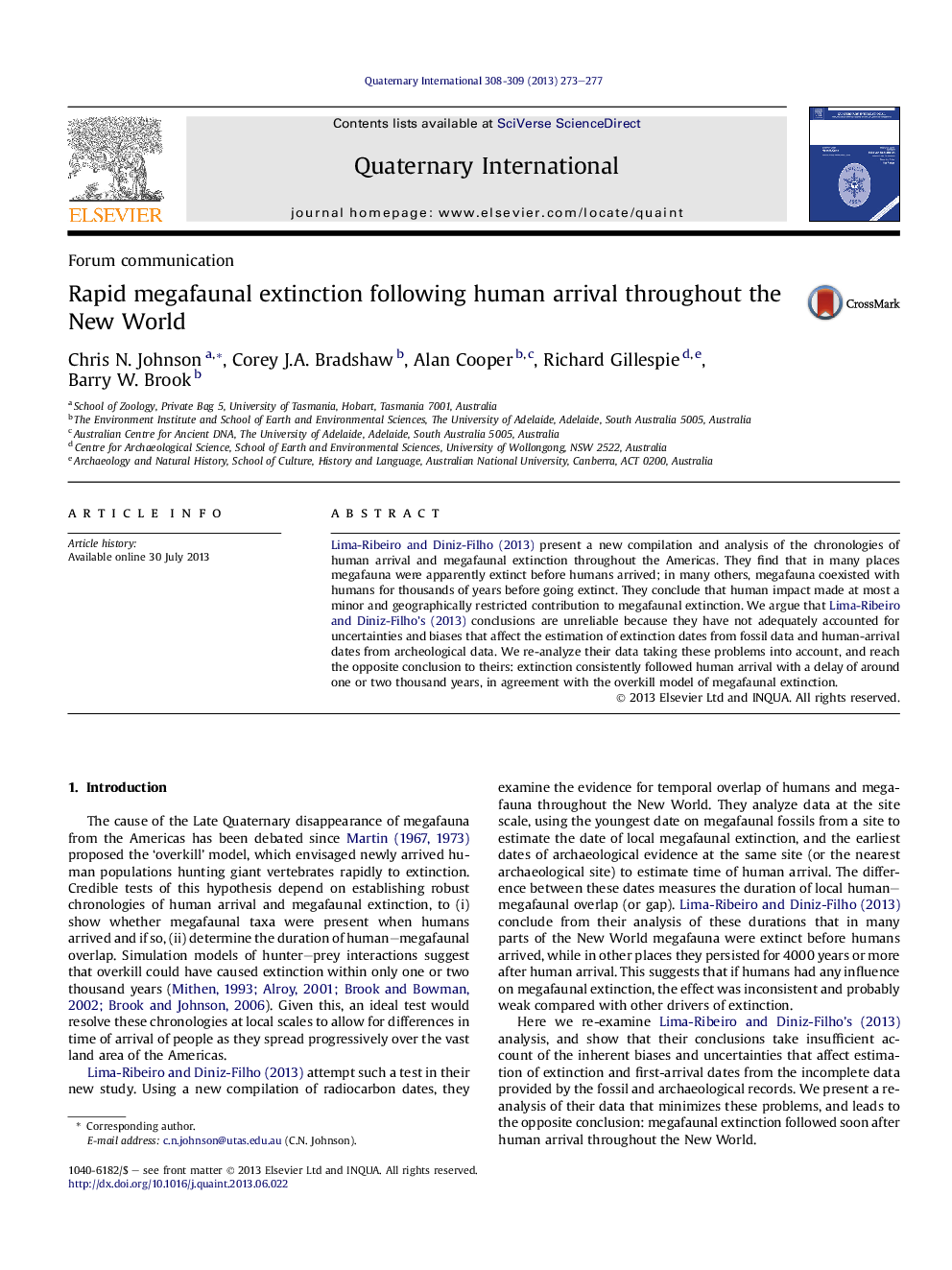| کد مقاله | کد نشریه | سال انتشار | مقاله انگلیسی | نسخه تمام متن |
|---|---|---|---|---|
| 1041819 | 1484181 | 2013 | 5 صفحه PDF | دانلود رایگان |

Lima-Ribeiro and Diniz-Filho (2013) present a new compilation and analysis of the chronologies of human arrival and megafaunal extinction throughout the Americas. They find that in many places megafauna were apparently extinct before humans arrived; in many others, megafauna coexisted with humans for thousands of years before going extinct. They conclude that human impact made at most a minor and geographically restricted contribution to megafaunal extinction. We argue that Lima-Ribeiro and Diniz-Filho's (2013) conclusions are unreliable because they have not adequately accounted for uncertainties and biases that affect the estimation of extinction dates from fossil data and human-arrival dates from archeological data. We re-analyze their data taking these problems into account, and reach the opposite conclusion to theirs: extinction consistently followed human arrival with a delay of around one or two thousand years, in agreement with the overkill model of megafaunal extinction.
Journal: Quaternary International - Volumes 308–309, 2 October 2013, Pages 273–277